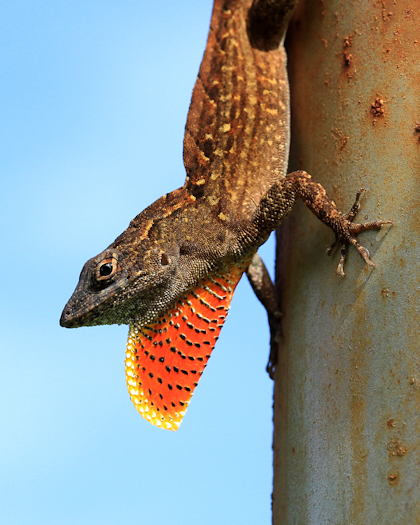Over the past few years, two European research programs developed an interest in the ancient fauna and environment of the Guadeloupe islands. The prospection for cave deposits led to the discovery of numerous accumulations of fossil remains documenting the Holocene and Late Pleistocene faunas of the archipelago, especially on the island of Marie-Galante, where three major deposits were discovered.
Blanchard Cave is one of these deposits. This cave contains the oldest fossil-bearing sedimentary layers of the island dated around 40,000 years before present and is an excellent complement to the two others cave documenting the Late Pleistocene fauna of Marie-Galante (Cadet 2 and Cadet 3).
After a test excavation in 2008 that revealed the potential of the site in term of fossil fauna, Blanchard cave was investigated between 2013 and 2014 in the framework of a European research program interested in the past environment and fauna of the Guadeloupe islands, the BIVAAG project. The three excavation campaigns conducted during this period allowed the precise documentation of the sedimentary filling of the cavities and the recovering of thousands of skeletal remains mainly attributed to frogs, lizards, snakes and bats.
But collecting the fossils remains was not that easy and although the perspective of working in the Caribbean a few hundred meters from the sea could seem very attractive, the working conditions in the cave were far from pleasant. Mainly because the cave was inhabited from the ground to the roof by numerous cockroaches, rats, gnats and bats. Bats were extremely noisy, and proved to be extremely rude hosts. Another difficulty was the potential occurrence of histoplasmosis in the cave that led to the necessity of wearing a respirator during the work. Such masks make breathing difficult during the work and combined with the heat, humidity and other disagreements previously mentioned strongly impact your initial enthusiasm.
Once you overlook these difficulties, the sediment was extracted from the site and then washed and sieved in order to retrieve the small bones contained in it (the bones are usually smaller than 5 mm). The remains were then recovered and sorted, partly in the field (unfortunately this activity often kept the paleontologists outside of the cave and away from the bats), before being studied.
The results of the study of the squamates remains collected in the cave can be found in a very recently published paper. To summarize the main findings, we found evidence of the past occurrence of at least ten species of snakes and lizards: four snakes: Antillotyphlops sp., Boa sp., Alsophis cf. antillensis and an undetermined colubroid; and six lizards: Anolis ferreus, Iguana sp., Leiocephalus sp, Thecadactylus sp., cf. Capitellum mariagalantae and Ameiva sp.. The stratigraphic distribution of these taxa in the site combined with previously existing data show that only two extinctions (Boa sp. and Colubroid ind.) are dated from the Pleistocene/Holocene transition and thus predate the arrival of humans on the islands around 5000 years ago. Then during the pre-Columbian times two new taxa appear in the deposits, Iguana and Thecadactylus. On the other hand, a massive faunal turnover began after the European colonization of the island. Indeed, at least six squamate genera (Leiocephalus, Capitellum, Ameiva, Antillotyphlops, Alsophis and Erythrolamprus), including all the snake genera, were extirpated between 1492 and today. Thus, 55% of the squamate genera present during pre-Columbian times went extinct over the past few centuries.
These results are further evidence of the current sixth mass extinction crisis and of the strong impact of humans on this insular fauna. However, Marie-Galante Island remains an isolated case because the past fauna of most of the Lesser Antillean islands remains poorly known and in most cases totally unknown despite the critical importance that such data may have in many fields to test inferences built on modern data.














